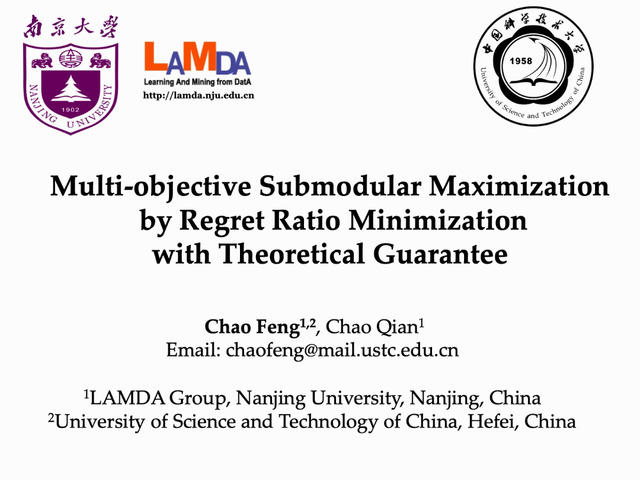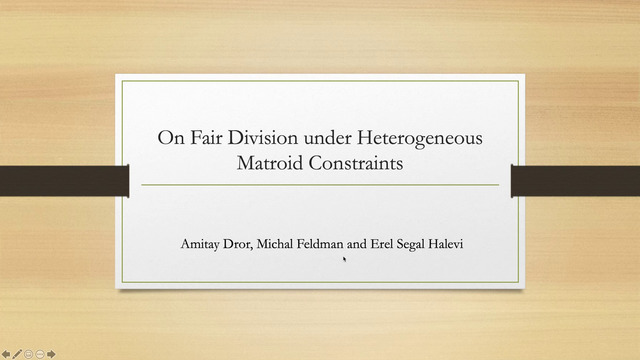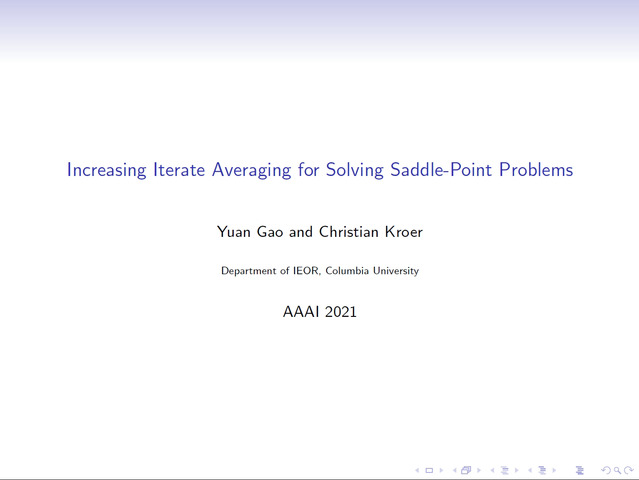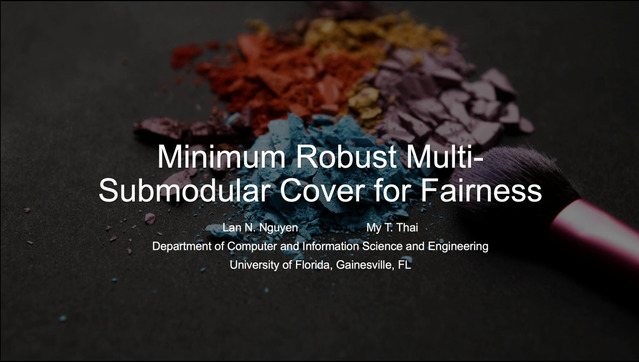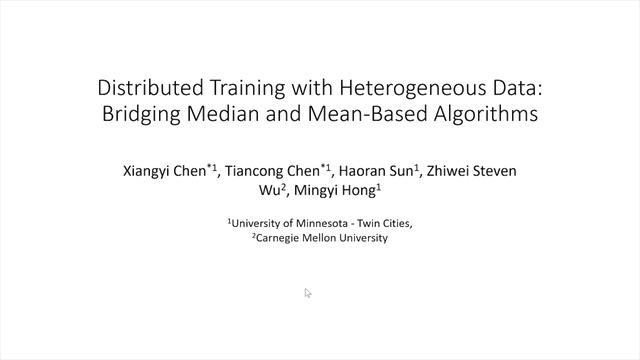Abstract:
Matching algorithms are used routinely to match donors to recipients for solid organs transplantation, for the assignment of medical residents to hospitals, record linkage in databases, scheduling jobs on machines, network switching, online advertising, and image recognition, among others. Although many optimal solutions may exist to a given matching problem, when the elements that shall or not be included in a solution correspond to individuals, it becomes of paramount importance that the solution is selected fairly. In this paper we study individual fairness in matching problems. Given that many maximum matchings may exist, each one satisfying a different set of individuals, the only way to guarantee fairness is through randomization. Hence we introduce the distributional maxmin fairness framework which provides, for any given input instance, the strongest guarantee possible simultaneously for all individuals in terms of satisfaction probability (the probability of being matched in the solution). Specifically, a probability distribution over feasible solutions is maxmin-fair if it is not possible to improve the satisfaction probability of any individual without decreasing it for some other individual which is no better off. Our main contribution is a polynomial-time algorithm building on techniques from minimum cuts, and edge-coloring algorithms for regular bipartite graphs, and transversal theory. In the special case of bipartite matching, our algorithm runs in $$O((|V|^2 + |E| |V|^{2/3})\cdot (\log |V|)^2)$$ O ( ( | V | 2 + | E | | V | 2 / 3 ) · ( log | V | ) 2 ) expected time. An experimental evaluation of our fair-matching algorithm shows its ability to scale to graphs with tens of millions of vertices and hundreds of millions of edges, taking only a few minutes on a simple architecture. To the best of our knowledge, this yields the first large-scale implementation of the egalitarian mechanism of Bogomolnaia and Moulin (Econometrica 72(1):257–279, 2004 ). Our analysis confirms that our method provides stronger satisfaction probability guarantees than non-trivial baselines.








